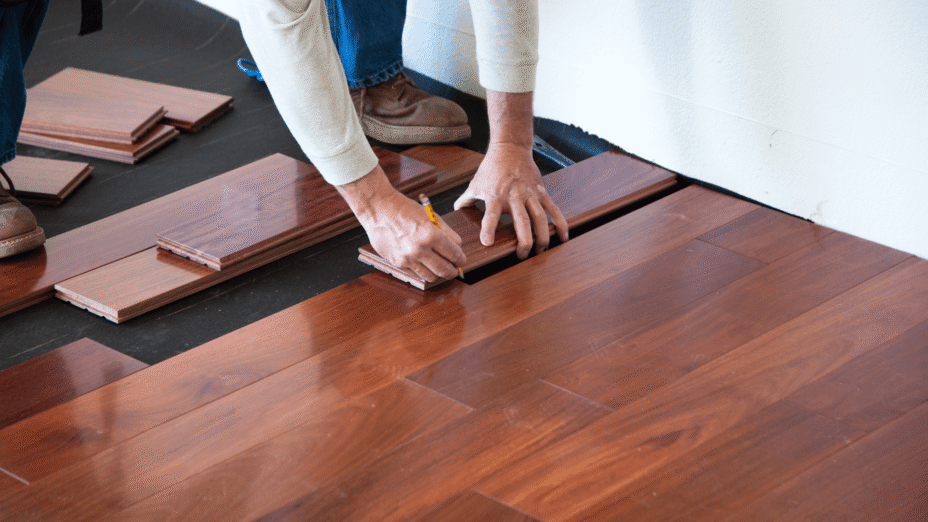Hardwood Flooring: A Comprehensive Guide

Hardwood flooring. The words conjure images of warmth, elegance, and timeless beauty. It’s a flooring choice that consistently ranks high in desirability, and for good reason. Beyond its aesthetic appeal, hardwood offers durability, adds value to a home, and provides a natural, healthy living environment. However, navigating the world of hardwood can be overwhelming. This guide breaks down the categories of hardwood flooring, explores popular styles, and outlines key considerations to help you choose the perfect option for your space.
Understanding the Core Categories: Solid vs. Engineered

The first and most fundamental distinction in hardwood flooring lies between solid and engineered wood. Understanding the difference is crucial as it impacts installation, suitability for different environments, and overall cost.
- Solid Hardwood: This is the classic, traditional choice. It’s milled from a single piece of wood, typically ¾ inch thick, and offers a rich, authentic look. Solid hardwood can be sanded and refinished multiple times throughout its lifespan, extending its longevity significantly.
- Pros: Exceptional durability, classic aesthetic, potential for multiple refinishing, adds significant value to a home.
- Cons: Susceptible to moisture damage (not suitable for basements or bathrooms), can expand and contract with changes in humidity, generally more expensive than engineered wood, requires professional installation.
- Common Species: Oak (Red & White), Maple, Hickory, Walnut, Cherry, Ash.
- Engineered Hardwood: This flooring is constructed with a core of multiple layers of plywood or fiberboard, topped with a thin veneer of real hardwood. The veneer layer is typically 1/6 to 1/2 inch thick. This layered construction makes engineered hardwood more dimensionally stable than solid hardwood, meaning it’s less prone to warping and cupping due to changes in humidity.
- Pros: More moisture-resistant than solid hardwood (suitable for kitchens and basements with proper underlayment), easier to install (often available in click-lock systems), generally less expensive than solid hardwood, wider range of wood species and finishes available.
- Cons: Limited refinishing potential (depending on veneer thickness), veneer can wear down over time, may not offer the same “feel” as solid hardwood.
- Common Species (for the veneer layer): Similar to solid hardwood, but often includes exotic species like Brazilian Cherry, Bamboo (technically a grass, but often categorized with hardwoods), and Teak.
Delving Deeper: Wood Species and Their Characteristics
The choice of wood species significantly impacts the look, feel, and durability of your hardwood floor. Here’s a look at some popular options:
- Oak (Red & White): The most popular choice for decades, oak is known for its durability, readily available supply, and classic grain pattern. Red oak has a reddish hue and a more pronounced grain, while white oak is slightly harder and has a more neutral, tan color.
- Maple: A hard, dense wood with a fine, subtle grain. Maple offers a clean, modern look and is highly resistant to scratches and dents. However, it can be challenging to stain evenly.
- Hickory: The hardest domestic hardwood, hickory is incredibly durable and features a striking, dramatic grain pattern. It’s a great choice for high-traffic areas.
- Walnut: A rich, dark wood with a beautiful, swirling grain. Walnut offers a luxurious look and is relatively easy to work with. It’s softer than oak or maple, so it’s more susceptible to dents and scratches.
- Cherry: A reddish-brown wood that darkens with age, cherry offers a warm, inviting aesthetic. It’s a relatively soft wood and requires careful maintenance.
- Ash: Similar in hardness to oak, ash has a distinctive grain pattern and a light, creamy color. It’s a good alternative to oak, especially when oak supplies are limited.
Beyond the Basics: Styles and Finishes
Once you’ve chosen your wood type, consider the style and finish:
- Plank Width & Length: Wider planks (5″ or more) create a more modern, spacious feel, while narrower planks (2-3″) offer a more traditional look. Longer planks minimize seams and create a more seamless appearance.
- Grain Pattern: From the tight, uniform grain of maple to the dramatic swirls of walnut, the grain pattern significantly impacts the floor’s aesthetic.
- Texture: Options range from perfectly smooth and polished to hand-scraped, wire-brushed, or distressed finishes that add character and a rustic charm.
- Color & Finish: Stains can dramatically alter the color of the wood, while finishes (polyurethane, oil-based, water-based) protect the wood and influence its sheen (matte, satin, semi-gloss, gloss).
Key Considerations Before You Buy:
- Budget: Hardwood flooring can range significantly in price, depending on the species, construction, and finish.
- Lifestyle: Consider your lifestyle and the level of foot traffic your floor will endure. High-traffic areas benefit from harder wood species like hickory or maple.
- Subfloor: Ensure your subfloor is level and structurally sound before installing hardwood.
- Moisture Levels: Accurate moisture readings are crucial, especially for solid hardwood.
- Installation: While engineered hardwood can be DIY-friendly, solid hardwood typically requires professional installation.
- Maintenance: Regular sweeping, vacuuming, and occasional damp mopping are essential for maintaining the beauty of your hardwood floor.
The Future of Hardwood Flooring:

Sustainability is increasingly important. Look for certifications like FSC (Forest Stewardship Council) to ensure your hardwood comes from responsibly managed forests. New technologies are also emerging, such as pre-finished hardwood with enhanced scratch resistance and innovative installation methods that minimize waste and disruption.
Choosing hardwood flooring is a significant investment. By understanding the different categories, species, styles, and considerations outlined above, you can confidently select a floor that will enhance your home’s beauty, value, and overall living experience for years to come.
